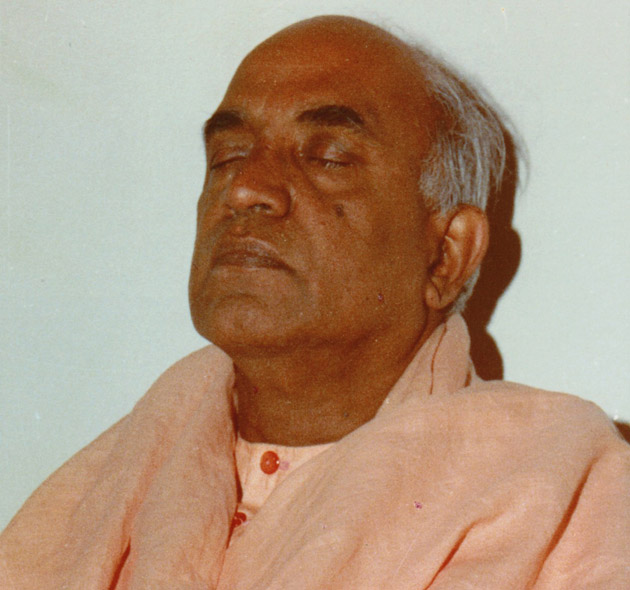
According to the Vedanta, and in line with Hindu thought, meditation is the repetition of a sacred phrase. This phrase is usually short and includes the salutation of a chosen Ideal, for example: Hail Shiva. Hail Krishna. Hail Shiva. Hail Supreme Brahman. The goal of a mantra is to enable the practitioner to focus on his/her ideal; the meaning of the words and the sound being emitted are both secondary. For this reason, mantras are meant to be used in repetition, rather for meditating on the meaning of each word within.
The practitioner is meant to put all of their love, all of their thoughts, and all of their will into this repetition. Little by little, the practitioner becomes so focussed that they are no longer aware of the outside world. This focused state will, after some time, resemble Jesus’ first commandment: “Thou shalt love the Lord thy God with all thy heart, and with all thy soul, and with all thy mind.”
In this way, the japa—the repetition of the name of the Lord—is not a mechanical activity, but rather an intense effort accompanied by deep concentration. This is of course quite difficult in the beginning, but by practicing it becomes progressively easier and more natural. The preparation one undertakes before the japa also makes a difference. If the practitioner is able to establish a relation of love with their chosen ideal, the japa will subsequently become easier. When starting out, this relation can appear imaginary, but over time it will feel deeper and more real. One must repeat a mantra slowly, while focussing. Then, in between repetitions, one must allow an interval, in order to draw the mind beyond all that lies within the realm of thought. This is the manner in which the practitioner accedes to the spiritual domain, where even thoughts are blocked off. The mind must be perfectly calm, as if it no longer existed.
If the japa is performed well, it can be compared to oil being poured from one vase to another, which flows regularly and homogenously. In the same way, a strong relation between God and oneself is formed. Our concentration must be fixed at one point in our body. This can be the heart, but not the physical heart in this case. The heart in question is located at the centre of the chest, at the height of the sternum (three centimetres above the stomach), and between the spinal cord and the sternum. One can also concentrate at the point in between our eyebrows. In this location, there can be physical or psychic reactions, like pain. If that happens, one can switch one’s focus to a point located outside of the body, which will remove the pain. Starting the japa on a spiritual form is always easier and, after some time, the practitioner will be able to meditate on the attributes of that form. But the ultimate goal is to transcend all names, all forms, and all attributes.
This is the way one must perform the japa. It is good to dedicate twenty or thirty minutes to this practice.
One can also focus on the form of an divine Incarnation, or on a major spiritual leader. One can even meditate on the presence of the Lord in all beings. It is also possible to meditate on the Lord beyond all forms and all description, on the divine spirit that resides in all hearts. This is difficult to practice. Nevertheless, these different forms of meditation are all good, as they help us to leave behind the awareness of the self.



